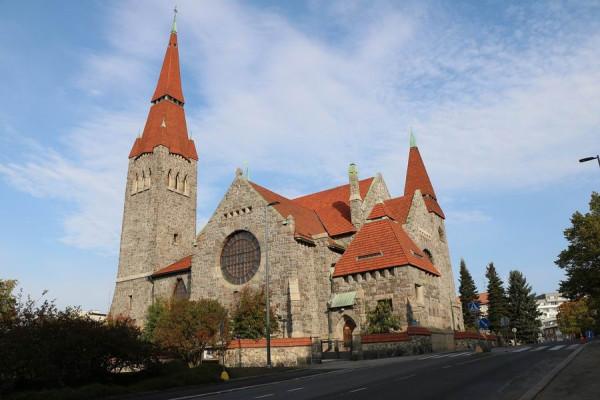Serving as the seat of the Diocese of Tampere, this Lutheran church stands as a testament to the exquisite beauty and architectural grandeur of the National Romantic style.
Designed by the esteemed architect Lars Sonck, the construction of this magnificent cathedral took place between 1902 and 1907.
One cannot help but be captivated by the awe-inspiring frescoes that adorn the walls of this sacred place. These masterpieces were brought to life by the talented symbolist painter, Hugo Simberg, during the years of 1905 and 1906.
Simberg’s works, including iconic pieces like “The Wounded Angel” and “The Garden of Death,” drew both widespread acclaim and harsh criticism. The sheer uniqueness of his artistic style and subject matter sparked intense discussions among art enthusiasts and critics alike.
Among the most contentious of Simberg’s creations was his painting of a winged serpent on a vivid red background, which graces the highest point of the cathedral’s ceiling.
This striking image stirred controversy and debate, as it challenged traditional notions of religious art. Yet, despite the initial backlash, the painting has become an integral part of the cathedral’s identity, adding an extra layer of depth and intrigue to its already rich history.
Standing tall and proud, the Tampere Cathedral continues to inspire awe and reverence among visitors from all walks of life. Its architectural splendor, combined with the thought-provoking frescoes created by Hugo Simberg, make it a true gem of the religious art world.
Whether you are a devotee, an art enthusiast, or simply a curious traveler, a visit to this remarkable cathedral promises an experience that is as enlightening as it is captivating.


